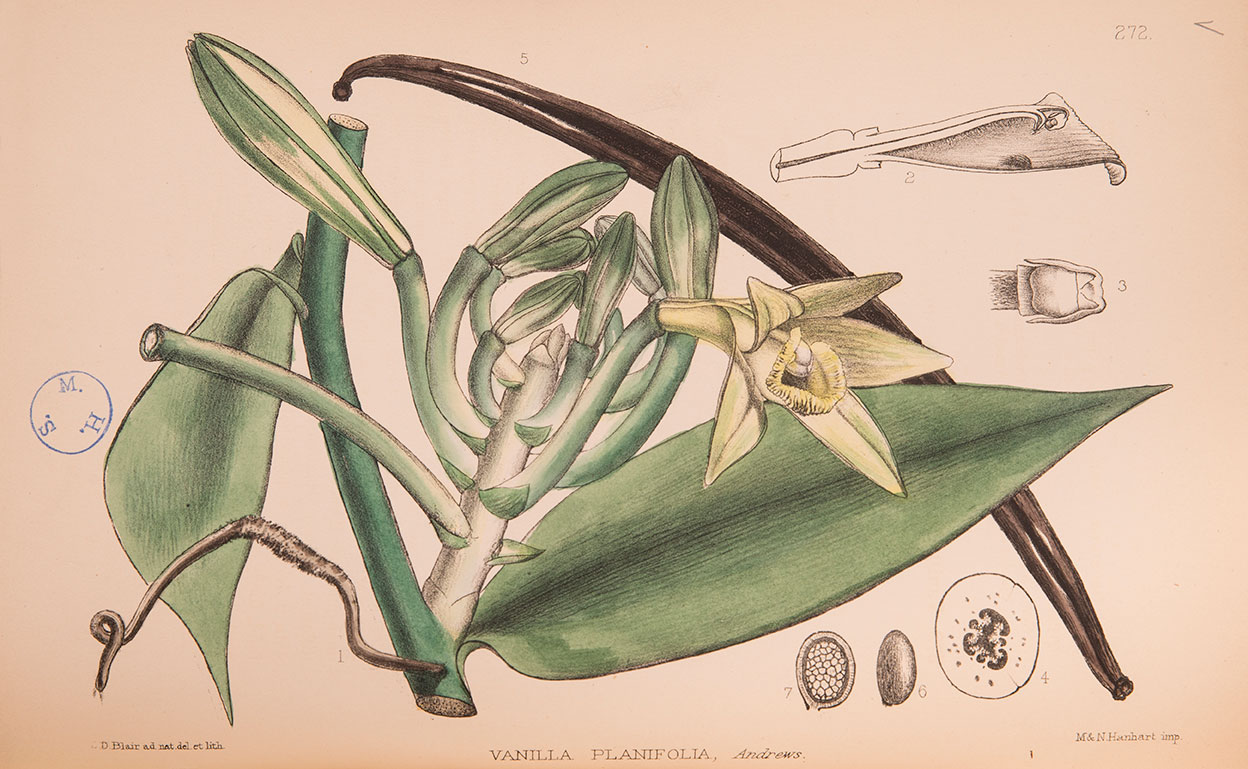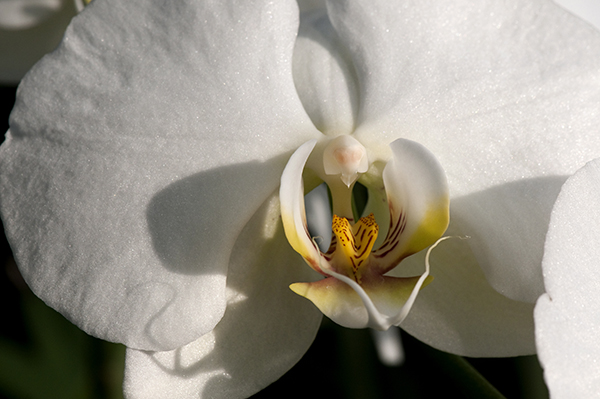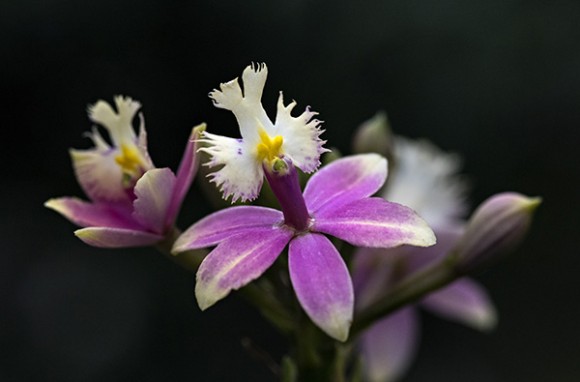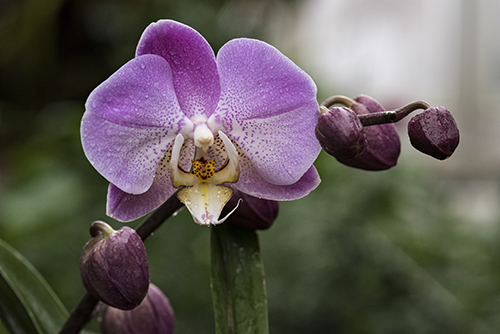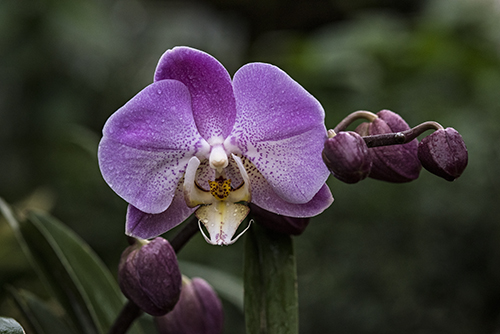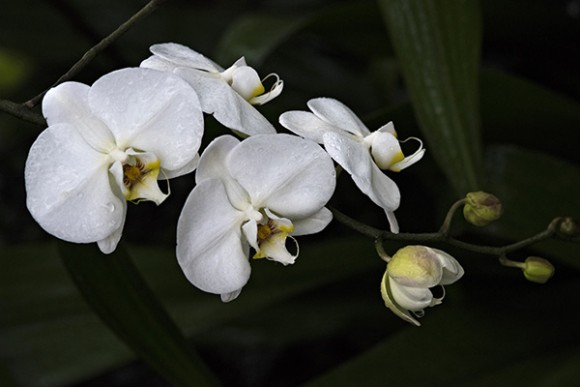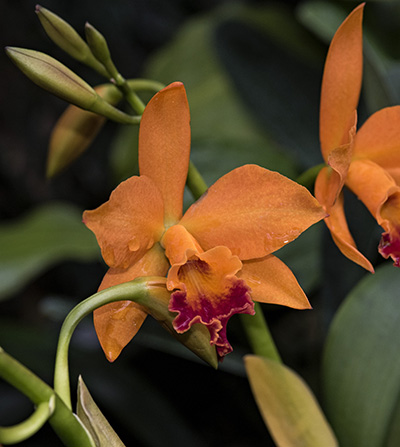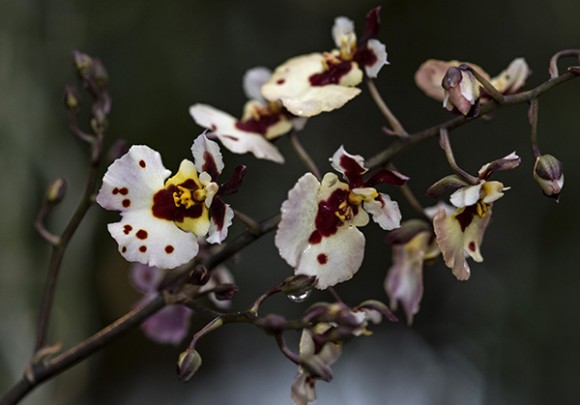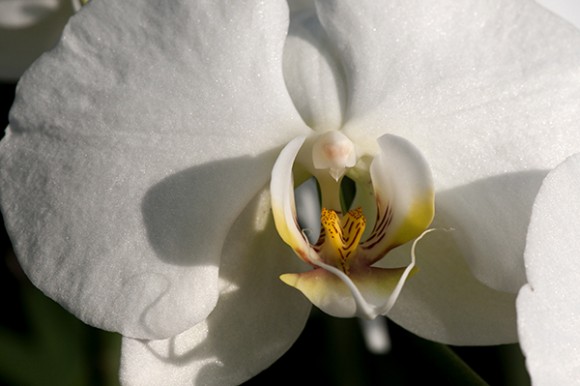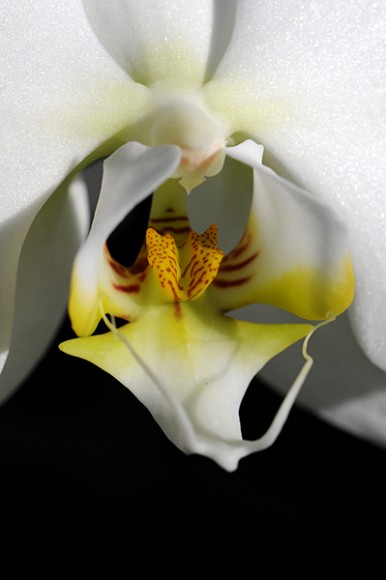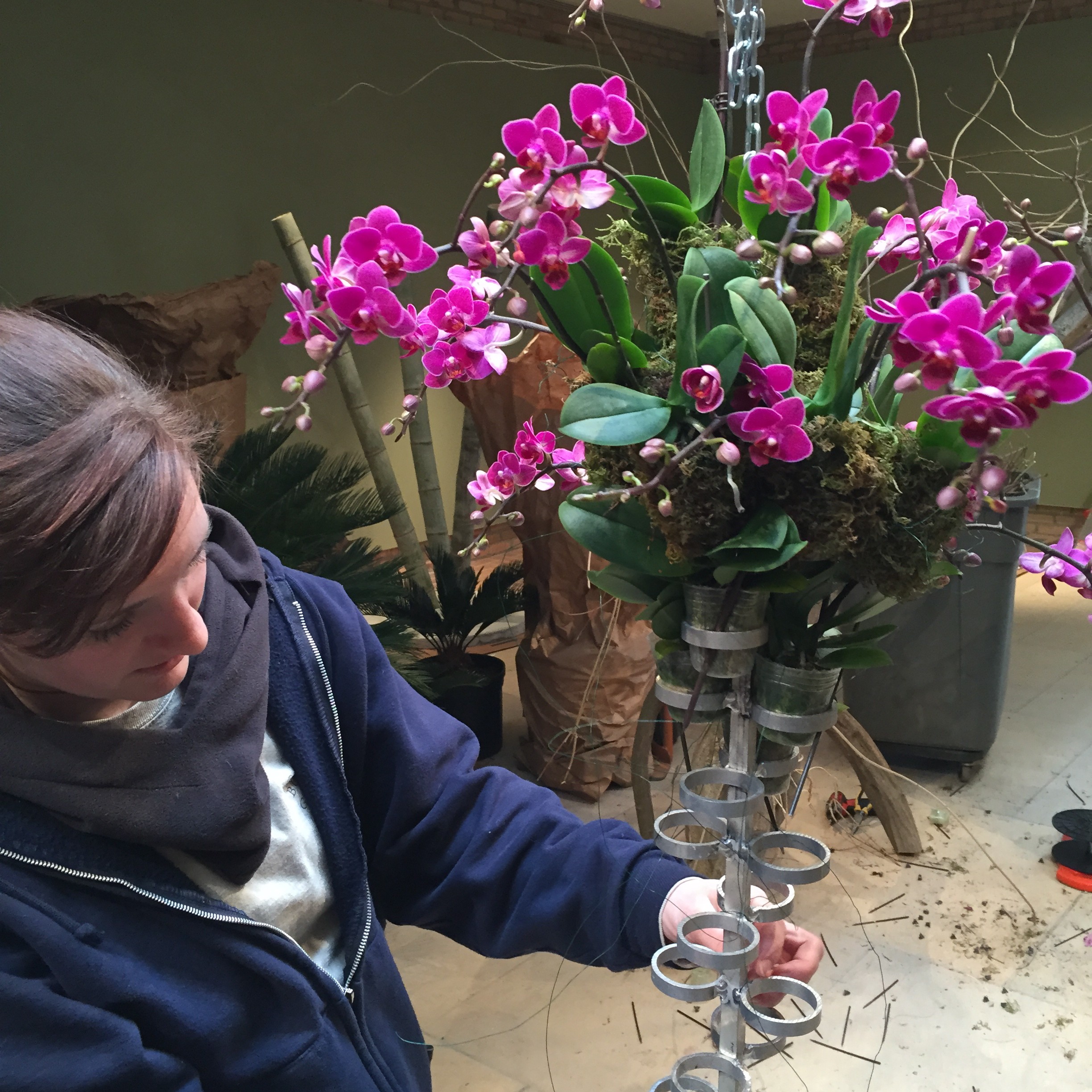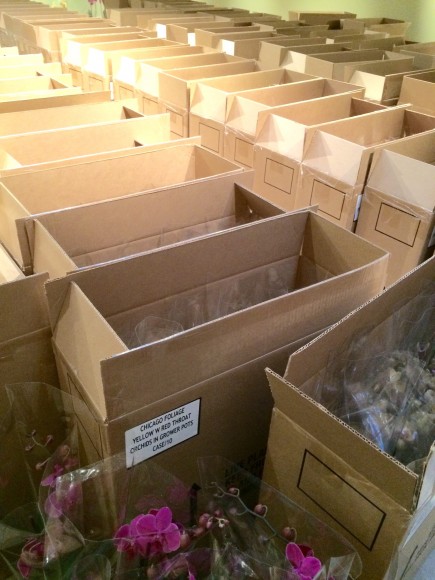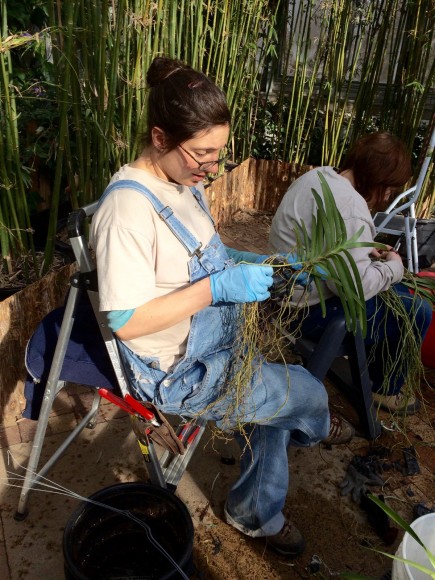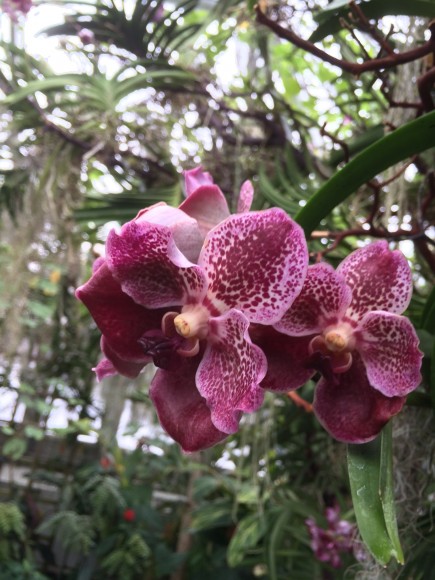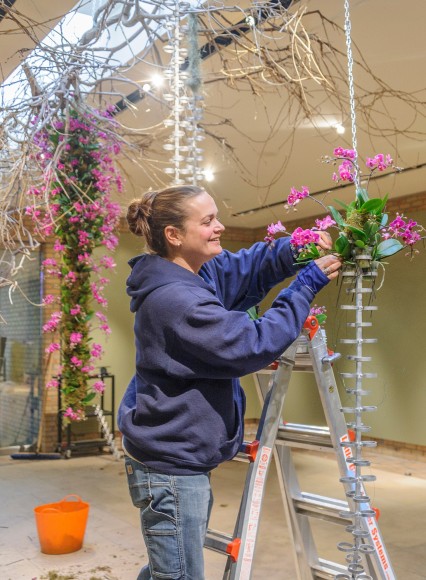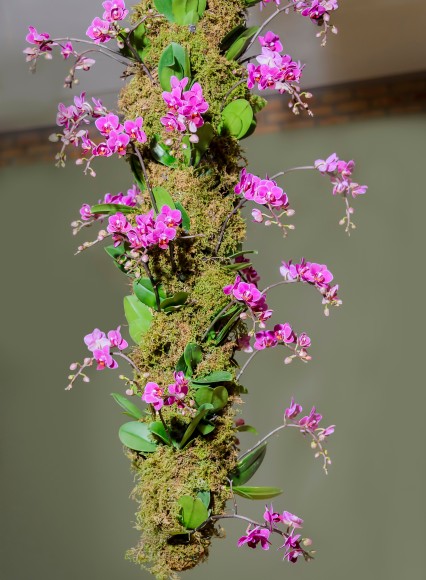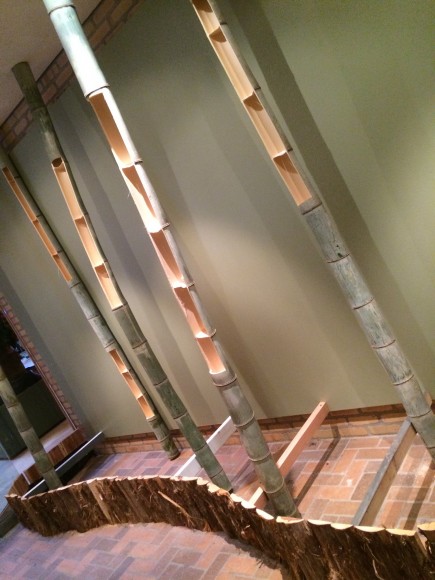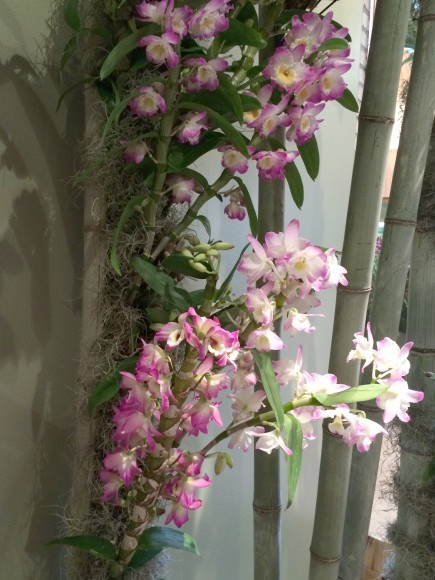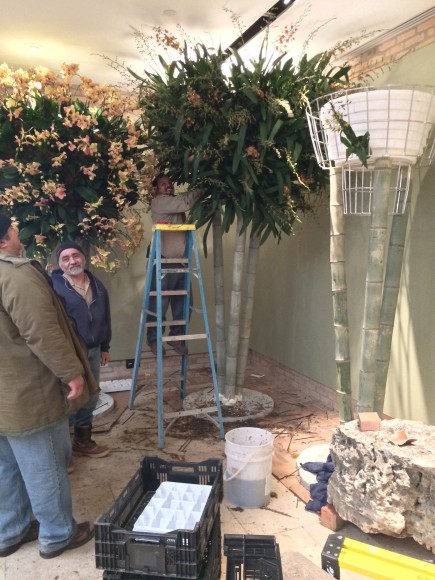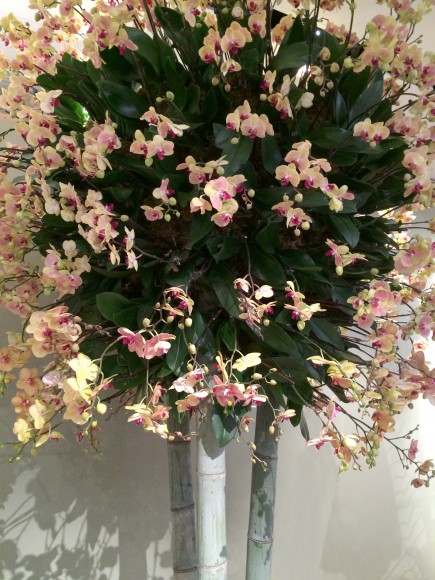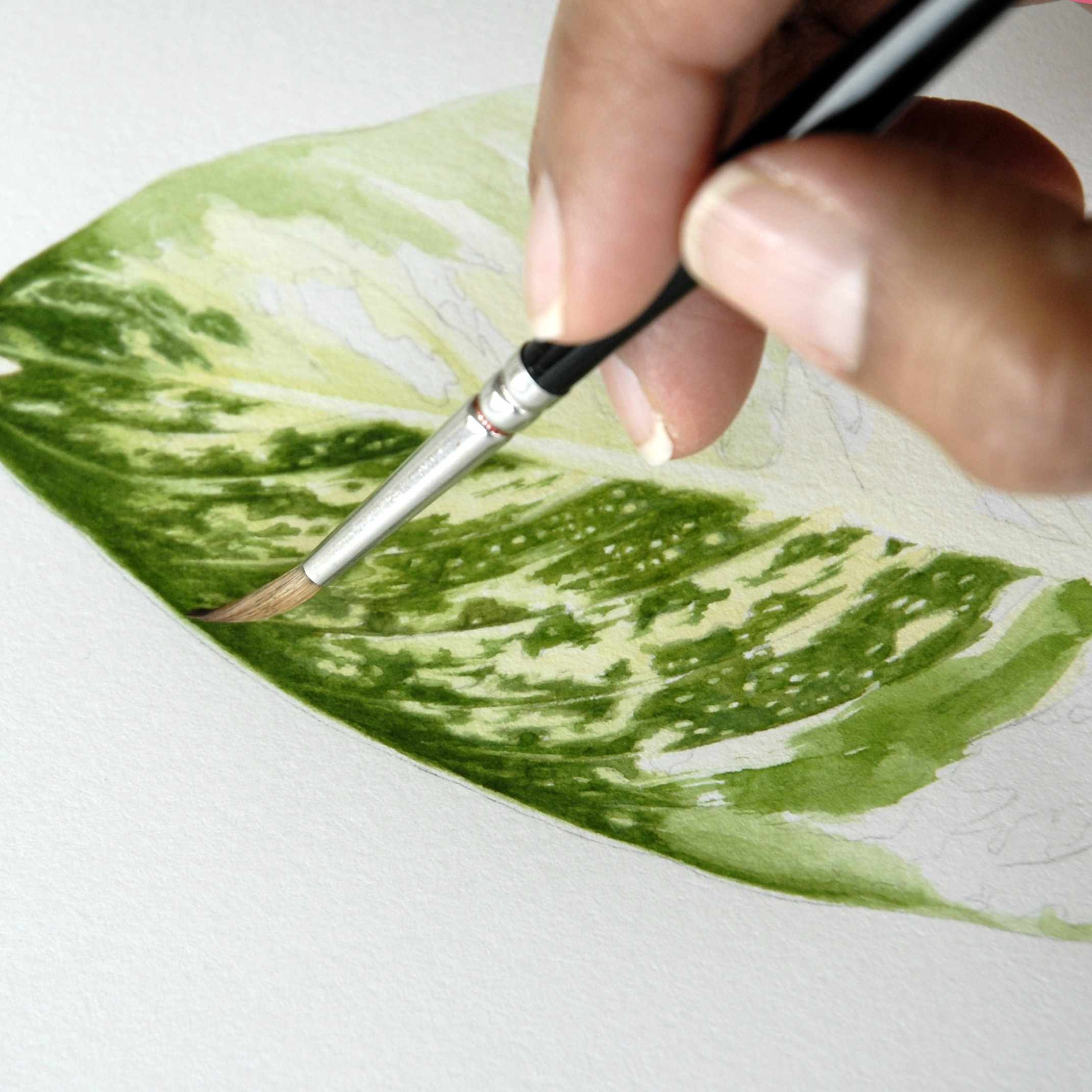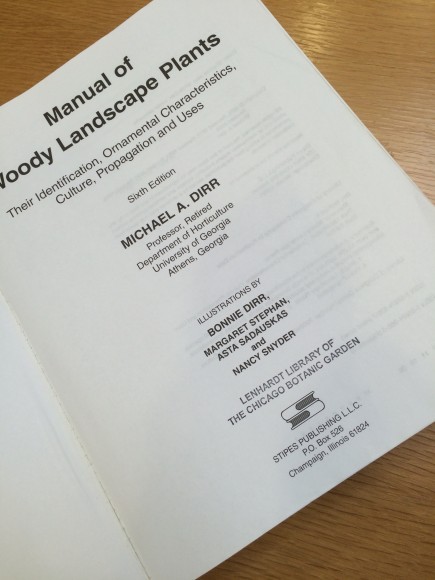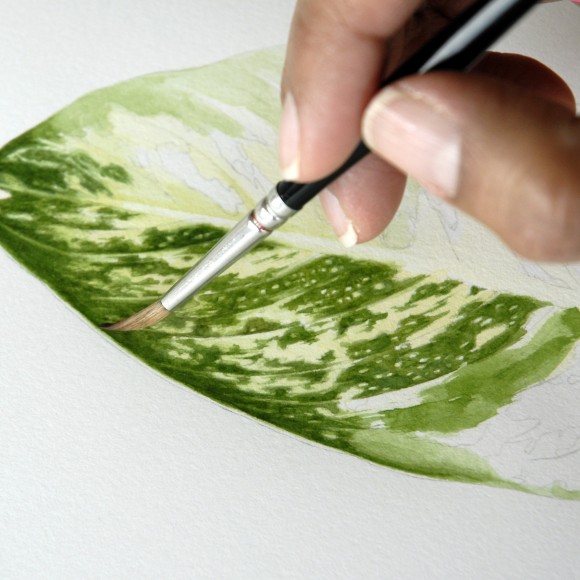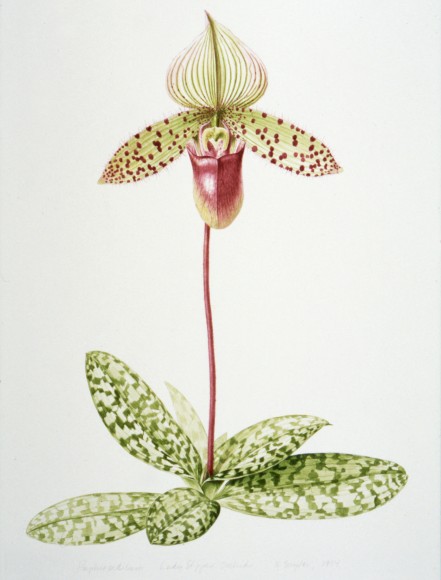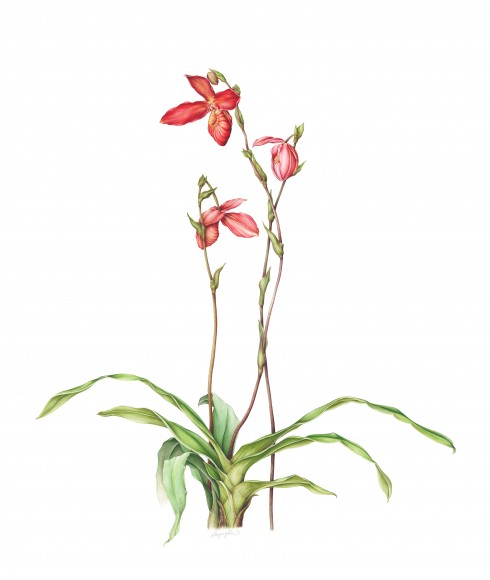The Victorians had it, and so do we, right here at the Lenhardt Library! A new rare book library exhibition has just opened as part of the Chicago Botanic Garden’s 2015 Orchid Show: Orchidelirium: Illustrated Orchidaceae.
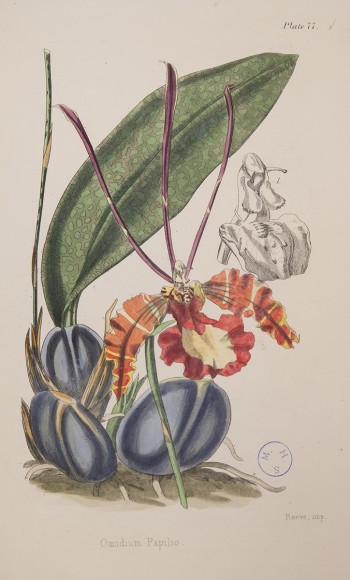
No matter what you call it, the Victorians were mad for the sensational new plants arriving in England from every exotic location on Earth. The race was on, as botanical explorations took orchid collectors from one end of the globe to another in search of the most beautiful, rare, vibrantly colored, sensuously shaped orchids to be found. Orchid fever flared again and again, from the first time the Victorians saw a Cattleya labiata from South America (it bloomed after arriving as packing material in 1818), to the orchid display of the 1851 Great Exhibition at the Crystal Palace, designed by gardener, architect, and member of Parliament Sir Joseph Paxton (1803–65).
And if that wasn’t enough, books, articles, and botanical journals were also devoted to the orchid.
No photography? No Internet? No matter! Botanical illustrators captured orchids in all their thought-provoking beauty, one engraving and lithograph at a time. These trained illustrators caught the clinical and technical aspects of the plants with sheer precision. After Cattleya labiata, the next Victorian orchid-on-demand was Oncidium papilio, the butterfly orchid, which is one of the most dazzling illustrations in Orchidelirium: Illustrated Orchidaceae.
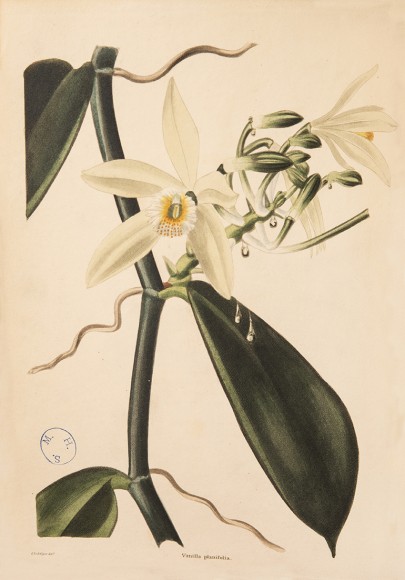
This year we celebrate Vanilla planifolia, an edible orchid that produces the second most expensive spice in the world, next to saffron. An entire case is devoted to the vanilla orchid—look for Sir Joseph Dalton Hooker’s Curtis’s Botanical Magazine: Comprising the Plants of the Royal Gardens of Kew, London: L. Reeve & Co., 1891.
Chocolate and vanilla lovers: don’t miss the rare plate from Zippel and Bollmann’s Ausländische Culturpflanzen in Bunten Wand-Tafeln (Foreign Cultivated Plants in Colored Wall Panels with Explanatory Text) that was used as a tool for teaching plant anatomy. Like many of our rare orchid books and journals, this fragile plate was in much need of conservation. It was conserved through a grant by the National Endowment for Humanities; the digitized plate can be accessed online at the Illinois Digitized Archives.
- Find more rare book images in the Lenhardt Library’s Digitized Special Collections
- For further reading on Orchidelirium, visit the Lenhardt Library’s Catalog.
- View the Lenhardt Library exhibition schedule.
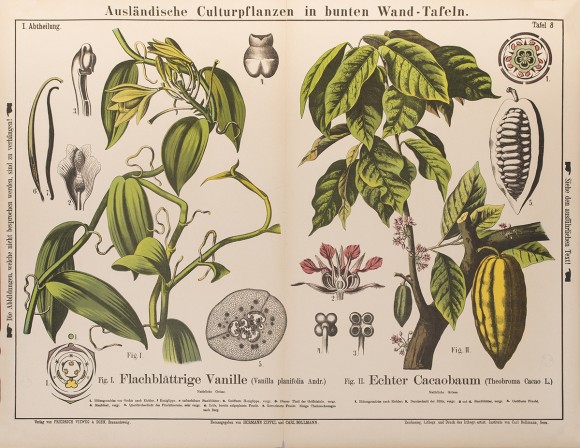
Orchidelirium: Illustrated Orchidaceae is open daily until April 19, 2015, with extended weekend hours (10 a.m. to 4 p.m.) during The Orchid Show.
©2015 Chicago Botanic Garden and my.chicagobotanic.org

